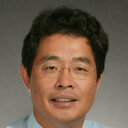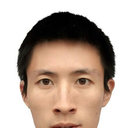A case report of Chinese brothers with inherited MECP2-containing duplication: autism and intellectual disability, but not seizures or respiratory infections.
Cuvinte cheie
Abstract
BACKGROUND
Autistic spectrum disorders (ASDs) are a family of neurodevelopmental disorders with strong genetic components. Recent studies have shown that copy number variations in dosage sensitive genes can contribute significantly to these disorders. One such gene is the transcription factor MECP2, whose loss of function in females results in Rett syndrome, while its duplication in males results in developmental delay and autism.
METHODS
Here, we identified a Chinese family with two brothers both inheriting a 2.2 Mb MECP2-containing duplication (151,369,305 - 153,589,577) from their mother. In addition, both brothers also had a 213.7 kb duplication on Chromosome 2, inherited from their father. The older brother also carried a 48.4 kb duplication on Chromosome 2 inherited from the mother, and a 8.2 kb deletion at 11q13.5 inherited from the father. Based on the published literature, MECP2 is the most autism-associated gene among the identified CNVs. Consistently, the boys displayed clinical features in common with other patients carrying MECP2 duplications, including intellectual disability, autism, lack of speech, slight hypotonia and unsteadiness of movement. They also had slight dysmorphic features including a depressed nose bridge, large ears and midface hypoplasia. Interestingly, they did not exhibit other clinical features commonly observed in American-European patients with MECP2 duplication, including recurrent respiratory infections and epilepsy.
CONCLUSIONS
To our knowledge, this is the first identification and characterization of Chinese Han patients with MECP2-containing duplications. Further cases are required to determine if the above described clinical differences are due to individual variations or related to the genetic background of the patients.





